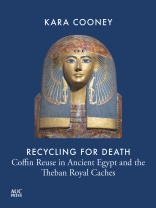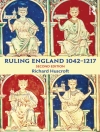A meticulous study of the social, economic, and religious significance of coffin reuse and development during the Ramesside and early Third Intermediate periods, illustrated with over 900 images
Funerary datasets are the chief source of social history in Egyptology, and the numerous tombs, coffins, Books of the Dead, and mummies of the Twentieth and Twenty-first Dynasties have not been fully utilized as social documents, mostly because the data of this time period is scattered and difficult to synthesize. This culmination of fifteen years of coffin study analyzes coffins and other funerary equipment of elites from the Nineteenth to the Twenty-second Dynasties to provide essential windows into social strategies and adaptations employed during the Bronze Age collapse and subsequent Iron Age reconsolidation.
Many Twentieth to Twenty-second Dynasty coffins show evidence of reuse from other, older coffins, as well as obvious marks where gilding or inlay have been removed. Innovative vignettes painted onto coffin surfaces reflect new religious strategies and coping mechanisms within this time of crisis, while advances in mummification techniques reveal an Egyptian anxiety about long-term burial without coffins as a new style of stuffed and painted mummy was developed for the wealthy. It was in the context of necropolis insecurity, economic crisis, and group burial in reused and unpainted chambers that a complex, polychrome coffin style emerged.
The first part of this book focuses on the theory and evidence of coffin reuse, contextualized within the social collapse that characterized
the Twentieth and Twenty-first Dynasties. The second part presents photo essays of annotated visual data for over sixty Egyptian coffins from the so-called Royal Caches, most of them from the Egyptian Museum in Cairo.
Illustrated throughout with high-quality images, the line drawings and color and black-and-white photographs are ideal for careful study, especially evidenced in the digital edition, where pages can be enlarged for close examination.
Jadual kandungan
Chapter 1: Reuse and Its Discontents
Chapter 2: The Context of Funerary Arts Reuse: Social Crisis, Patronage, and Tomb Robbery
Chapter 3: Patterns of Coffin Reuse
Chapter 4: Coffins of the Priests
Chapter 5: Coffins of the Kings and Queens
Chapter 6: The Royal Cache Mummies
Chapter 7: Conclusion
Mengenai Pengarang
Kara Cooney is a professor of Egyptology and chair of the Department of Near Eastern Languages and Cultures at UCLA. Specializing in social history, gender studies, and economies in the ancient world, she received her Ph D in Egyptology from Johns Hopkins University. In 2005, she was co-curator of Tutankhamun and the Golden Age of the Pharaohs at the Los Angeles County Museum of Art. Her popular books include The Woman Who Would Be King: Hatshepsut’s Rise to Power in Ancient Egypt, When Women Ruled the World: Six Queens of Egypt, and The Good Kings: Absolute Power in Ancient Egypt and the Modern World. Her latest academic book is Ancient Egyptian Society: Challenging Assumptions, Exploring Approaches.












